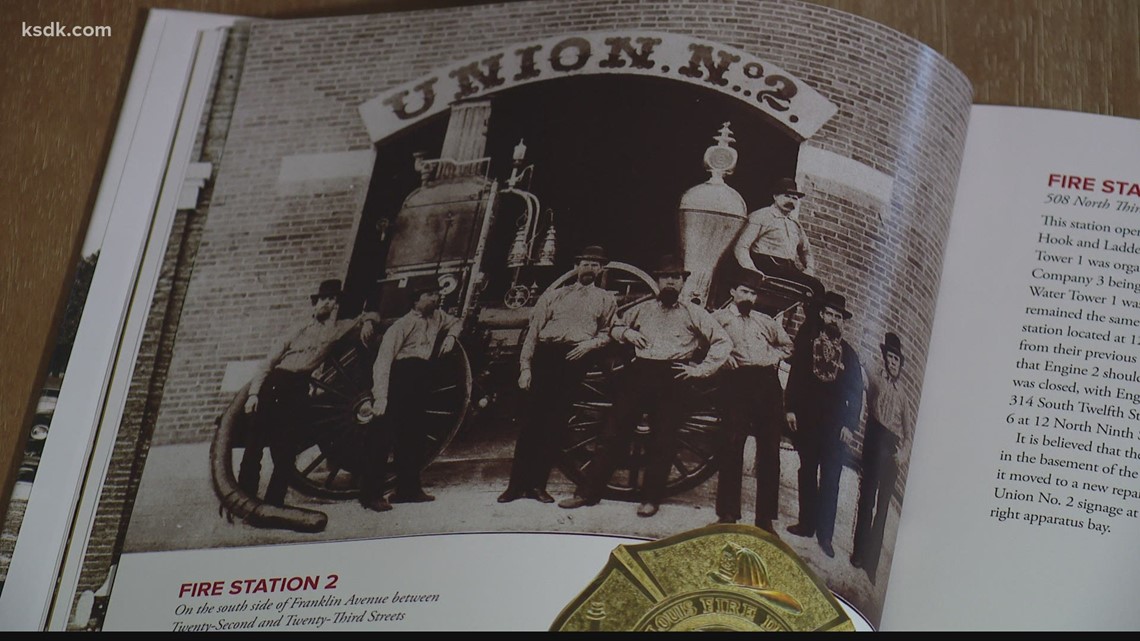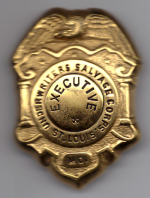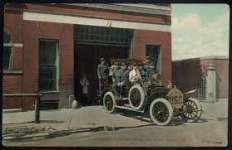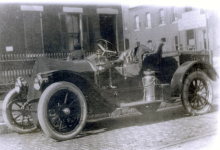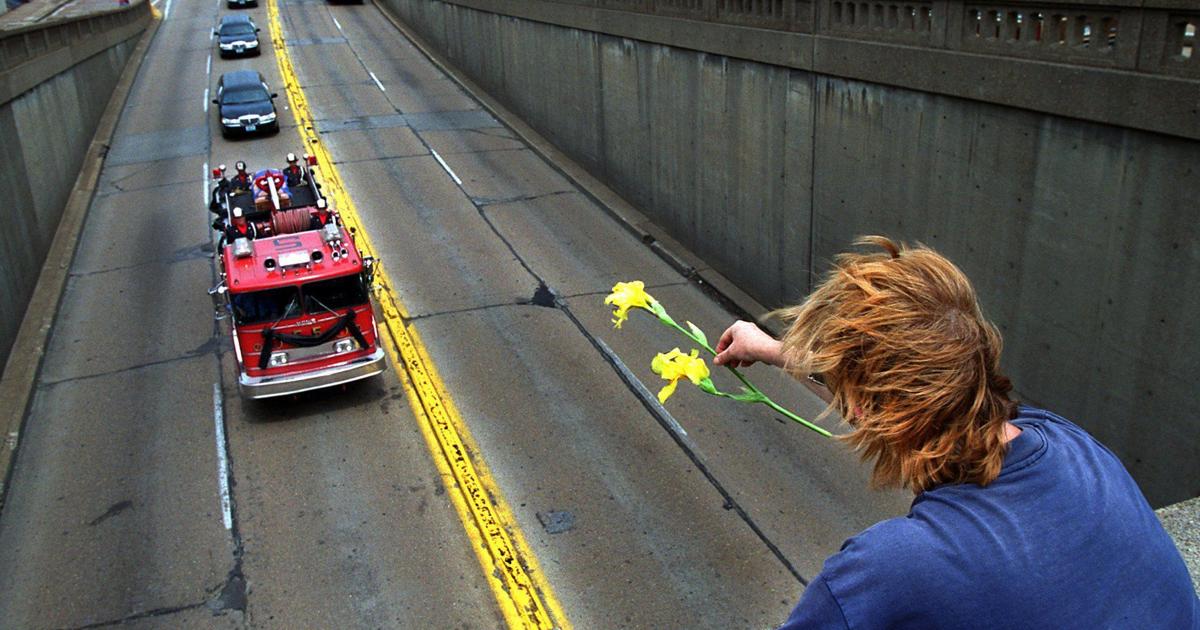
Fire Department History
Fire Department HistoryVolunteer Fire Department
It is not really known when any organized efforts became the way of life for extinguishments of fire in the City of St. Louis. Certain individuals voluntarily made it a practice to attend all fires and extinguish them to the best of their abilities.It was not until 1822 that any known efforts to organize were made for the estinguishments of fires in the City of St. Louis.
Read a Fire Department Chronological Timeline.
With only three wards in the city, a number of prominent citizens were appointed by the mayor to attend fires in what was then known as Mound City. Passing an ordinance to purchase the necessary equipment, -- which consisted of a strong leather bucket and a badge of white muslin with the name of the district they represented was painted on it -- the volunteer firemen began. When the alarm sounded each person who was designated would respond to his home and secure his bucket, attach the white muslin badge to his hat, and hurry to the scene of the fire.
The Volunteer Fireman
The members of the fire companies came from all walks of life. They were the power in the city and wielded considerable political influence by their numbers and strong organization. The volunteer firemen were expected to stop whatever he was doing, whether he was at work or play, and rush to a fire when the alarm sounded. If he failed to show or violated any rules or regulations, he was fined, sometimes very heavily. The pride and ambition of each fire company was to be the first to reach the fire and the most efficient to extinguish the fire.Volunteer Engine Companies
Central Fire Company No. 1 was organized in 1832 and the last to fade away in 1859.Union Fire Company No. 2 (1832-1855) "In Union There is Strength" this emblem still resides on Engine Company 2 past and present. A legacy passed on through the generations.
Washington Fire Company No. 3 "Veni, Vidi, Vici,"1833-1857
St. Louis Fire Company No. 4 "On Hand" (1839-1859)
Missouri Fire Company No. 5 "Press On" (1839-1858)
Liberty Fire Company No. 6 "We Conquer to Save" (1841-1858)
Phoenix Fire Company No. 7 "Surgo Lucidos" (1843-1858)
Franklin Fire Company No. 8 "We Have Met the Enemy and They are Ours" (1844-1858)
Mound Fire Company No. 9 "We Fly to Succor and Save" (1847-1857)
Laclede Fire Company No. 10 "Bon Accord" (1848-1858)
Lafayette Hook & Ladder No. 1 "Public Servants-Not Hirelings" (1854-1858) the only Hook & Ladder to exist in the volunteer services.
Good Will Fire Company No. 11 In existence for only a few months.
The Great Fire of 1849
St. Louis was the prominent point in the "Far West." In the Spring of 1849, the population of St. Louis was 45,000 with the western boundary of the city extending to Eleventh Street, about 3/4's of a mile in width, by a riverfront of three miles.On May 17 at 9:00 p.m. a fire alarm sounded. The steamer "The White Cloud" lying at the foot of Cherry Street was on fire. The Fire Department that consisted of 9 hand engines and hose reels promptly responded. The moorings parted and the steamer floated slowly down stream setting 22 other steamers on fire before the "White Cloud" reached the foot of Locust.
The flames leaped from building to building sweeping everything on the levee for four blocks; extending to Main Street westward and crossing Olive. It completely gutted three more blocks between it and Second Street and as far south as Market Street. It then ignited a large copper shop three square blocks away and burned out two more blocks. The Firemen, after laboring for eight hours, were completely demoralized and exhausted. The entire business portion of the city appeared doomed unless something was done. Six buildings were spread with explosive powder and blown up in succession. Captain Thomas B. Targee of Missouri No. 5 died while he was spreading powder into Phillips Music store, the last store to be blown up.
This marked the largest and most destructive fire St. Louis has ever experienced. The fire lasted from 9:00 p.m. until 8:00 a.m., and caused the loss of three lives, 430 buildings, 23 steamers, 9 flat boats, and several barges.
The Paid Fire Department
On September 14, 1857, the paid fire department started operations with H. Clay Sexton as the fire chief. Through the years the fire department continued to grow and by 1910 they had 51 horse-drawn steam engine companies, 17 hook and ladder companies, 11 district chiefs, a deputy chief, master mechanic, and a fire chief. On March 25, 1927, the fire horses made their final run, thus closing a colorful era in the fire department, as many of these brave animals had given their lives in the line of duty.In 1907 the fire chief received the first piece of motorized equipment, and in 1910 the first motorized pump was received. On March 9, 1914, Saint Louis suffered its worse loss of life when the Missouri Athletic Club at 4th and Washington caught fire and 30 men staying in the building perished in the blaze.
On May 16, 1921, history was made when Paul S. Farbush, Lorenzo Graham, Thomas S. Hill, Claude Johnston, Henry Porter, Frank Slaughter, and Walter Hill, along with Pearl Bishop (who was hired a day later) became the first African-American men hired to work for the St. Louis Fire Department. These seven men were initially assigned to Engine Company #24, located at 1214 Spruce Street. Read more on the African American History in the Fire Department.
Beginning on July 16, 1926, the St. Louis Fire Department training school was organized under the leadership of battalion chief George R. Ward. In 1933, five engine companies were taken out of service, and on August 6, 1942, General Order Number 30 was issued with the subject of the reorganization of the St. Louis Fire Department. The department was divided into 9 districts with a battalion chief in charge of each district, 43 engine companies, 23 hook and ladder companies, 12 hose wagons, and a rescue squad. Also new running cards were made consisting of five alarms. The first five-alarm blaze occurred on December 11, 1942 at the Dye Candy Company located at 310 S 21st St.
During the start of World War II orders came from Washington, D.C. that Saint Louis must plan an auxiliary fire force. The fire chief called in some loyal fire buffs, including Phil Nauman to take over the huge task of training these volunteers. This program was called the United Stats Citizens Defense Corps and two of the jobs were auxiliary firemen and fire watchers. The auxiliary firemen had portable pumps mounted on trailers which could be hauled behind an automobile or truck.
Phil Nauman was also one of the founders of the Box 8 Club which was organized in 1941. The name came from a combination of the fire alarm box and Signal 8 -- an 8 bell ring used to shift equipment to a station left without apparatus during a big fire. On January 24, 1958 the St. Louis fire Department assumed control of Lambert Field (now known as Lambert International Airport) for firefighting duties. On hand were two Navy crash trucks on loan to them. These were replaced by two Air National Guard crash trucks, a rescue truck, and an ambulance. The first battalion chief to serve as Airport Chief was Charles Swinhart.
Another interesting bit of history came to a close at the stroke of midnight on December 31, 1955 when the Underwriters Salvage Corps passed into history. They had served the city for 82 years, working alongside our fireman and dying with them in the line of duty.
The city opened its first ranch style fire station on June 17, 1960 at 5600 Prescott Avenue, for Engine Company No. 20, Hook and Ladder Company No.12, and Hose Wagon No.7. The property was to have 8,910 square feet or 125,960 cubic feet; cost has been estimated for site improvement and building at $173,745, which is $16.50 a sq.ft or $1.38 a cu.ft.
On January 1, 1977 Saint Louis discontinued the Gamewell system which had been in service since 1858. The first fire alarm office was in the dome of the Old Court House; at that time there were 45 fire alarm boxes in service. St. Louis was the second city to adopt the electrical system of receiving and transmitting alarms of fire.
In the 1980's changes started to take place with the first women firefighters to join the fire department, and a new headquarters building was opened at Jefferson and Cass.
EMS History
The City Ambulance Service (as it was then called) began its first series of two-man procedures in September 1971. The old red and white ambulance, under the guidance of the Health and Hospitals Division, was what the city depended on for emergency situations.Having previously relied on the first aid knowledge of city police officers, most of the people who began then agree that the first training programs were anything but easy. They endured hours of study and training while continuing to work under the guidance of a senior partner whose only qualification was driver.
With one person driving the ambulance, seeing a need to thrive even further and in accordance with the State of Missouri, it became mandatory for all ambulance personnel to be qualified as licensed EMT's. By the end of 1974, all ambulance personnel were required to complete a minimum of a 120-hour course in the care and transportation of the sick and injured. Re-licensing of EMT's would be required every three years.
The following year saw even greater challenges: the birth of the first paramedic crews and the long overdue hiring of female employees.
Successfully making the transition in just a few short years, the new Emergency Medical Service expanded into full-scale operation from Life Support Units.
On April 19, 1997 EMS was incorporated into the St. Louis Fire Department, and renamed the Bureau of EMS.
Last edited:

